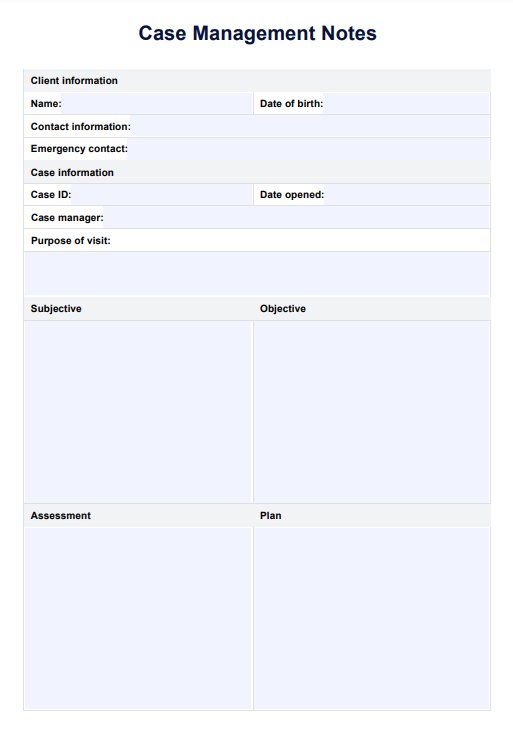Case management documentation refers to the systematic recording of information related to a client's case, including assessments, service plans, interventions, and outcomes. This documentation is essential for tracking the progress of clients, ensuring continuity of care, and facilitating communication among healthcare providers. It serves as a legal record and helps in evaluating the effectiveness of interventions and services provided.

Case Management Notes
Produce well-written case notes with tips from our guide and a free Case Management Notes template.
Case Management Notes Template
Commonly asked questions
Case notes should include key information such as the date of the encounter, client’s identifying information, the client's subjective thoughts, objective observations made by the case manager, any assessments conducted, and the outcomes of interventions. Additionally, notes should document any changes in the client’s situation, follow-up actions required, and plans for future meetings or services.
To write a good case management progress note, start with a clear and concise summary of the client’s current status and any significant changes since the last note. Use objective language and avoid jargon to ensure clarity. Include specific details about interventions implemented during the session, the client’s response to those interventions, and any goals achieved or challenges encountered. Finally, outline next steps or recommendations for future care, ensuring that the note is well-organized and easy to follow.
EHR and practice management software
Get started for free
*No credit card required
Free
$0/usd
Unlimited clients
Telehealth
1GB of storage
Client portal text
Automated billing and online payments











